Tourist Destination
Tourist Destination
- Korea Kwanggwang Data Lab: Let me introduce top15 analyzed by Korea Tourism Organization Data Lab.
Total 15case
-
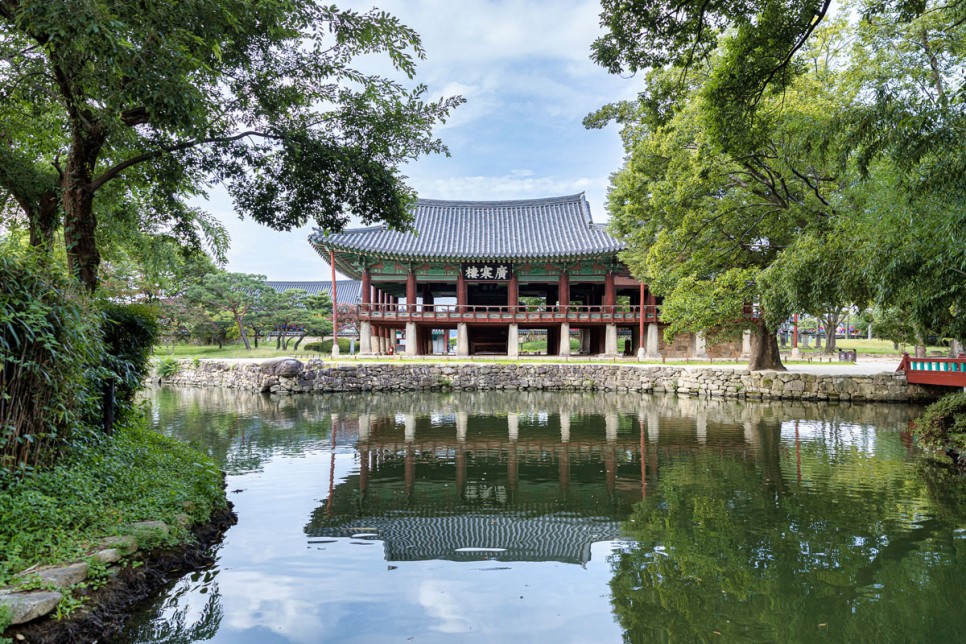
- Gwanghalluwon Garden
- It is Korea's No. 1 Nuwon that expresses the world view of God and the heavenly universe.Originally, this was the place where Hwang Hee built a pavilion called Gwangtongru in the first year of King Sejong's reign (1419) and enjoyed landscape. In 1444, Jeong In-ji, an observer of Jeolla-do, was drunk on the beautiful scenery while walking around Gwangtongru Pavilion and called it Gwanghan Cheongheobu in Wolgung, where a beautiful woman from the moon lives. In 1461, the vice president's office renovated Gwanghallu Pavilion and drew the clear water from Yocheon Stream to create a pond that symbolizes the Milky Way in the sky.In the lake, lotus flowers symbolizing paradise on the ground were planted, and Ojakgyo Bridge, a bridge of love, was installed on the pond, where Gyeon-woo and Jik-nyeo were blocked by the Milky Way and met only once on July 7. This stone bridge has four rainbow-shaped holes that allow water to flow from both sides, and is the most representative bridge of the Korean garden.
- MORE VIEW
-
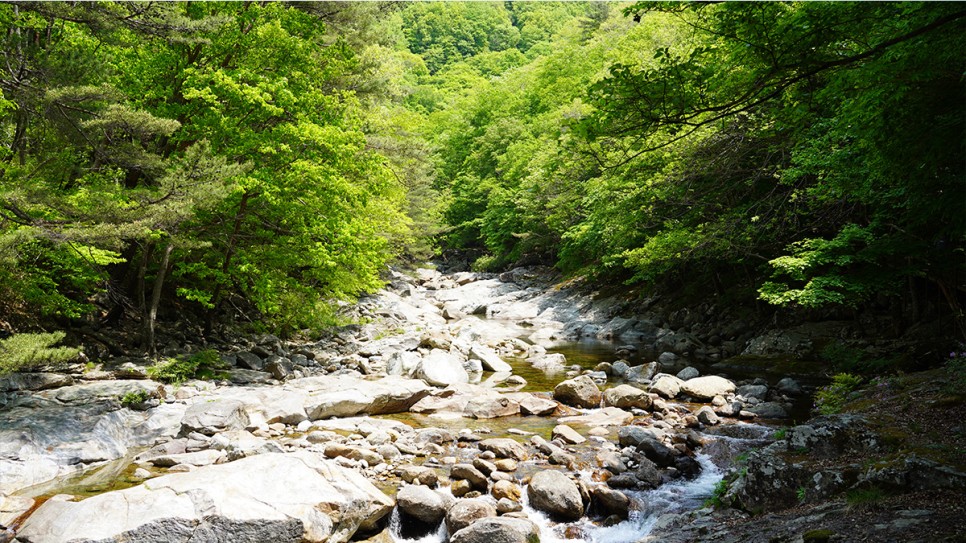
- Bamsagol Valley
- Located in Namwon, Jeollabuk-do, Baemsagolgyegok is a 9-km grand valley, situated at the northern foot of Jirisan Mountain. Stretching from Banyabong Peak and Tokkibong Peak toward Sannae-myeon of Namwon-si, the valley is renowned for its beautiful autumn foliage. Baemsagolgyegok Valley is popular as a summer vacation destination because there’s always an abundance of water and trees. In the fall, the hills become ablaze with autumn tints, small streams flow over rock beds, and small pools of clear water from under the rocks create a beautiful sight. Other notable places nearby include Seonindae, Seoksil, Yoryongdae, Tagyongso, Byeongso, Byeongpungso, Jeseungdae and Ganjangso.
- MORE VIEW
-

- Unbong Herb Valley
- Herb Valley is a herb tourism farm created in Yongsan-ri under Unbong of Jirisan Mountain. Namwon can be said to be a treasure trove of herbs where a total of 1,300 kinds of herbs grow naturally in a clean natural environment. Here, various herbal products such as food and alternative medicine products using herbs and eco-friendly herbal raw materials are produced. In Namwon Herb Valley, there is an herb theme park full of herbs-themed things to see, enjoy, and experience, as well as herb flower picking, There is an herb experience tourism farm where you can experience various herbs such as making herbal tea and making herbal scented candles. In addition, there are herb product processing complexes, herb agricultural districts, and native plant ecological parks where you can enjoy herbs in a variety of ways.
- MORE VIEW
-
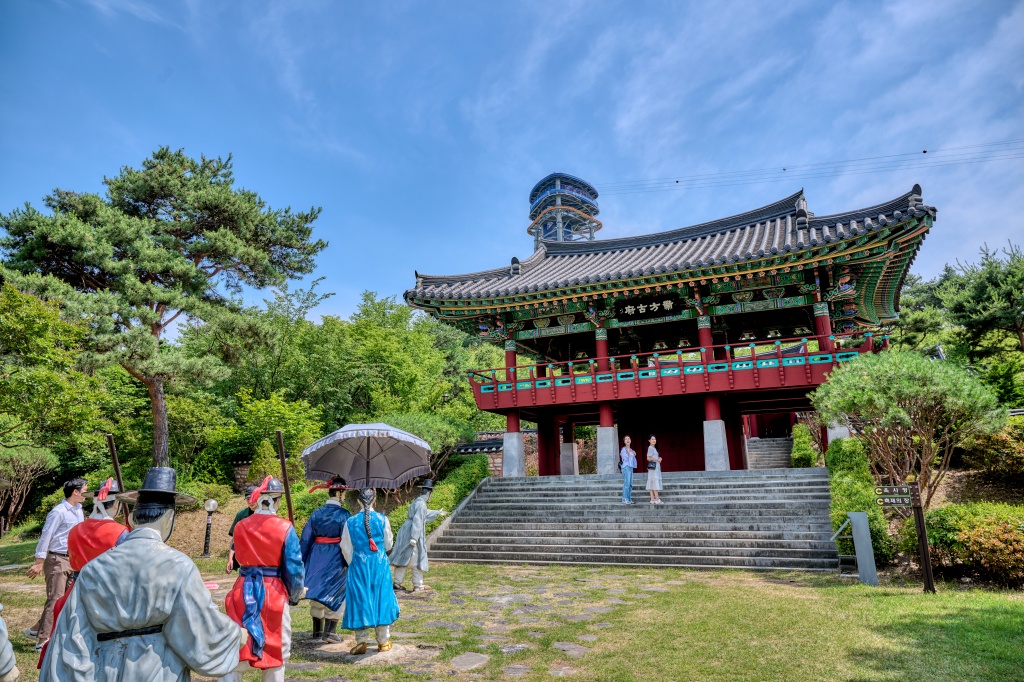
- Chunhyang Theme Park
- a love-themed tourist destination Located in the Namwon Tourist Site in Yanglim-gil, Namwon-si (35,000 pyeong), it was created as a tourist destination with a love theme, including the filming location of Lim Kwon-taek's film "Chunhyangjeon." The love of [Chunhyang] is contained in the hearts of those living today so that those who start love can make memories of love in the past, and the life story of the Chunhyang theme is reproduced with five halls of love: meeting place, covenant place, movie set, and festival place. In addition, there are old buildings containing the lives of ordinary people in the middle of the Joseon Dynasty, including Dongheon, Gwana, Naea, Wolmaejip, Buyongdang, and Oksajeong, which were completed through thorough historical evidence, so that you can understand the lives of ordinary people and Chunhyang in the middle of the Joseon Dynasty. a meeting place The meeting place, which welcomes visitors with traditional beauty and modern convenience facilities, includes a comprehensive guide to the theme park, a floor lighting fountain, a Chunhyang Madang, a general product hall, and a traditional cultural experience center. a place of pledge There are a wall of love, a platform of pledge, and a swinger that promises the well-being and love of all tourists who visit the theme park. Love, a farewell party It is a place where Chunhyang's hardships and the completion of pure love are restored in the mid-Joseon Dynasty, and the main scenes of Chunhyang are reproduced in miniature and real size, and there are director Im Kwon-taek's filming set for Chunhyang and Mong-ryong's first night, Buyongdang, Wolmaejip, workshop, and a writing room where tourists can write their own brush. a place of trial The shape of the prison and government office, which reproduced Chunhyang's heartbreaking farewell and prison life, has been restored. a festival venue It is a space where a rest square and an outdoor performance hall were created for the convenience of group visitors and the venue for festival events.
- MORE VIEW
-
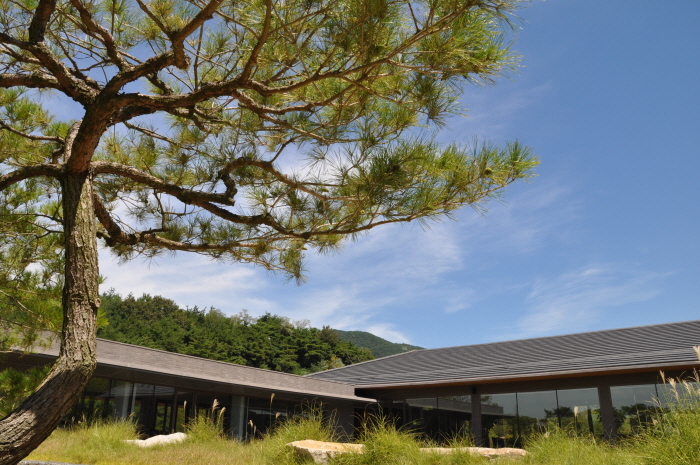
- Namwon Adamwon
- Adamwon is a landscaping farm that originally grew trees, and was reborn as a beautiful garden in August 2018 by carefully planting and managing each tree and grass through the know-how of Goryeo Landscape, a landscaping company, over the past 10 years. Along with the unexplored scenery at the foot of Jirisan Mountain, it is an arboretum that provides visitors with a great place of healing and is reborn as one of the best tourist destinations in Namwon, and the cafe located inside sells brunch menus, drinks, and bakeries. A total of about 10 Adamwon trails preserve ancient nature, and in particular, Jukyeonji, where lotus flowers bloom, is the most beloved trail and photo zone in Adamwon.
- MORE VIEW
-
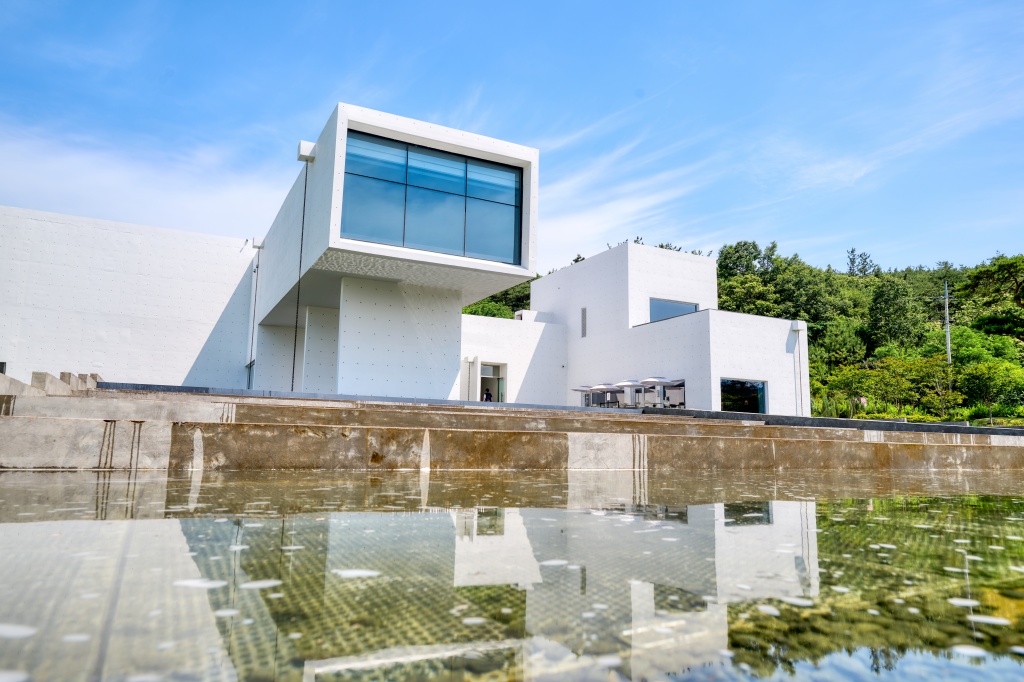
- Kim Byung-jong Museum of Art
- The Namwon Municipal Kim Byung-jong Museum of Art, located within the Chunhyang Theme Park in Namwon-si, Jeollabuk-do, opened on March 2, 2018. As a public art museum directly operated by Namwon City, the purpose of establishment is to improve the quality of life through the enjoyment of culture and art by citizens and to publicize the characteristics of local art by preparing an exhibition space for local artists. In particular, Namwon-born artist Kim Byung-jong (b.1953) donated his representative works in large quantities to Namwon City, laying the foundation for his collection. Surrounded by forests, Namwon Municipal Kim Byeong-jong Museum of Art is a rural art museum, and it is a complex cultural facility where modern people tired from busy daily life come to appreciate art works as well as nature and heal their minds. It is also a space where art and literature coexist by displaying various literature-related materials donated by Kim Byeong-jong, a famous writer. A book cafe with about 2,000 books related to art, literature, and humanities also contributes to the unique role of the museum.
- MORE VIEW
-
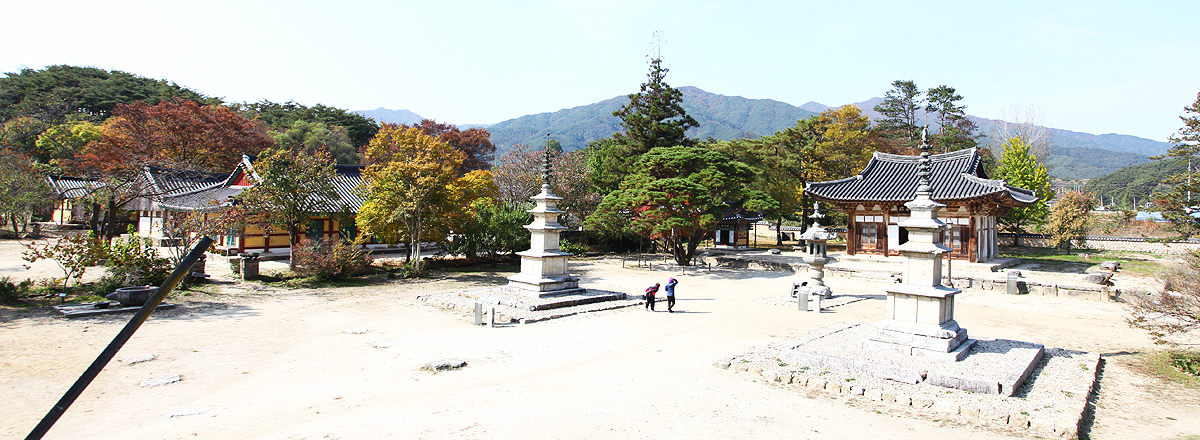
- Silsangsa Temple (Namwon)
- Silsangsa Temple was founded in the 3rd year of King Heungdeok of Silla (828), when Jeunggak Buddhist Monk estimated Silsangsanmun, one of the nine mountain gates. It is said that if a temple is not built here, the spirit of our country will go to Japan, according to the theory of feng shui geography. It was rebuilt in the 26th year of King Sukjong's reign (1700) of the Joseon Dynasty, but it was almost burned down in the 19th year of King Gojong's reign (1882) and only part of it remained. Currently, it has 17 local cultural properties, the most as a single temple, including a three-story stone pagoda of Baekjangam Hermitage and 11 treasures, which are about 5m high, which are national treasures. The driveway is in the middle of a rice field, and the temple is surrounded by trees, not in the mountains. The stone guardian post that you can see after passing Haetalgyo Bridge, a half-moon-shaped stone bridge, from the entrance of the temple is impressive. * Sari Pagoda in a hand-rolled image * It was designated as a treasure as the pagoda of Sucheolhwasang, a monk of the Unified Silla Dynasty, in the grounds of Silsangsa Temple in Ipseok-ri, Sannae-myeon, Namwon-si, Jeollabuk-do. It is 3m high, and the material is granite. It is a sarira pagoda built by monks to enshrine sarira after entering the temple, and is commonly called Budo. This pagoda belongs to Sucheolhwasang, a monk from the Unified Silla Period, who was a disciple of Hongchukguksa Temple and was the second temple of Silsangsanmun, originally staying at Simwonsa Temple, and later came to Silsangsa Temple to become the second founder of this temple. In 893 (the 7th year of Queen Jinseong's reign), when Sucheol Hwa-sang was 77 years old, Queen Jinseong gave the title of Sucheol Hwa-sang and named the tower Neunggabowol. Currently, it is located on the right toward the Geungnakjeon Hall of Silsangsa Temple. [Namwon Silsangsa Sucheolhwasang Pagoda (Sucheolhwasanggabowol Pagoda)] Treasure (designated January 21, 1963) * A faithful description of the architectural style of the wooden building * This pagoda is a typical octagonal Wondang-shaped pagoda of the Unified Silla Period, consisting of octagonal angles from the foundation stone to the roof stone. The stylobate consists of three stages, and the lower stage is carved with patterns such as clouds, dragons, and lions, but it is difficult to recognize due to severe abrasion, and pillars are engraved on each corner of the platform. The opponent carved several layers of Bokryeon, the petals are wide and the center part is slightly raised. An octagonal pedestal is placed on the opponent, and a pagoda body and a roof stone are placed on it, and the pagoda body is carved with a gate monument and a statue of Four Heavenly Kings on each side. The roof stone is thick, and the detailed style of wooden architecture is faithfully described, such as the delicate carving of lotus trees under the eaves and tile valleys on the slopes of the roof. The upper part has only a few floors left, but the rest is gone. Next to the stupa, there is the "Actual Suksusu Cheolhwasangaunggabowoltapbi," which shows the date, activities, and life of Sucheolhwasang. This pagoda is based on the octagonal Wondang-type stupa style of the Unified Silla Period, and is considered an important work in that it faithfully depicts the detailed style of wooden architecture. * Saritap Pagoda of Hongchuk Ambassador of Unified Silla * It is a 2.42m high tower of Hongchok, a monk of the Unified Silla Dynasty, located in the precincts of Silsangsa Temple in Inje-ri, Sannae-myeon, Namwon-si, Jeollabuk-do, and is designated as a treasure. The stupa is a sarira pagoda built by monks to enshrine sarira after they entered the temple, and is called Budo. This pagoda is the sarira pagoda of Great Master Hongchuk. Ambassador Hong Cheok entered the Tang Dynasty during the reign of King Heongang of the Unified Silla Dynasty and returned to Korea in 826 (the 1st year of King Heungdeok). He is the Gaesanjo of Silsangsanmun, Jirisan Mountain, the first prose of the Gusan Seonmun of the late Silla Dynasty. The date of the entry of Ambassador Hongchuk is unknown, but it is estimated to be in the mid-9th century, and it seems that the pagoda was also built around this time. The title of Master Hongchuk is Jeunggak, and the name of the pagoda is Eungyotap. [Namwon Silsangsa Temple] Treasure (designated on January 21, 1963) * Sculpture of the statue of Buddha and Bodhisattva * The Eungyotap Pagoda of Jeunggaksa Temple is an octagonal-shaped sarira pagoda with all parts of it in octagonal shape except for the foundation stone. The foundation stone has a wide plan in a square shape, and an octagonal base, a pagoda body, and a roof stone are placed above it. The lower part is made of two stones, and the lower part of the stone is decorated with cloud patterns, and the upper part of the stone has no patterns, and a first-stage support for receiving the company is provided. The pedestal is placed on a pedestal with two squares on each side, and on each side, there is a shallow sculpture of a statue of Buddha and a Bodhisattva in the Ansang. The opponent is decorated with 16 leaves of Angryeon, which is splendidly arranged in three layers, and a pagoda body pedestal carved with an eye image is placed between the high-bok-shaped pillars above it. On the two sides of the pagoda body, a gate monument and a statue of Four Heavenly Kings are carved. * Data in the form of octagonal-shaped stupa of Unified Silla * Okgaeseok faithfully describes the detailed style of wooden architecture, such as a lotus tree under the Chunyeo and a tile bone delicately carved on the slope of the roof, and there is a small hole at the end of the Chunyeo with a pungtak. At the top of the roof stone, there is a two-stage square upper ring support, and the upper ring part currently has only Angryeon Stone decorated with eight single-plate angryeonmun, Boryun decorated with lotus gate, and circular boju. Next to the pagoda, the Stele of Silsangsa Temple Jeunggakdaesa Temple is erected, so you can see the activities and life of Ambassador Hong Cheok. This pagoda shows the octagonal Wondang-type stupa of Unified Silla in the mid-9th century along with the Bohol Pagoda of Silsangsa Sucheolhwasang.
- MORE VIEW
-
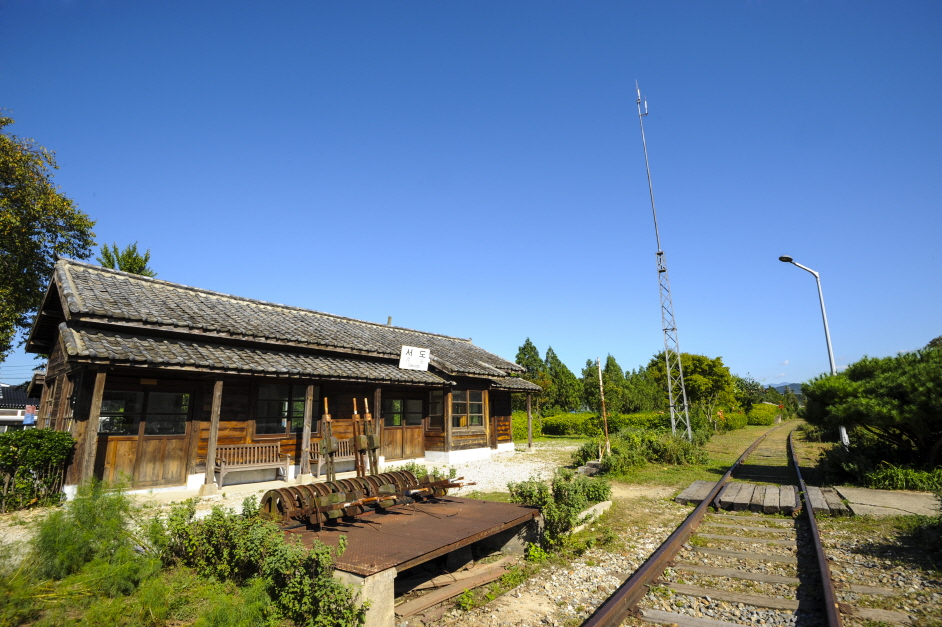
- Old Seodo Station
- It is a train station on the Jeolla Line between Sanseong Station (downbound) and Osu Station (upbound). During the improvement of the Jeolla Line, the station building was newly built and relocated to its current location. From July 1, 2008, the station office was disappeared due to a simple station without station staff. The old Seodo Station is the stage of Choi Myung-hee's novel Honbul, and is a place visited by many people, and it is continuing to be a hot spot for life shots of young lovers against the backdrop of the old railroad.
- MORE VIEW
-
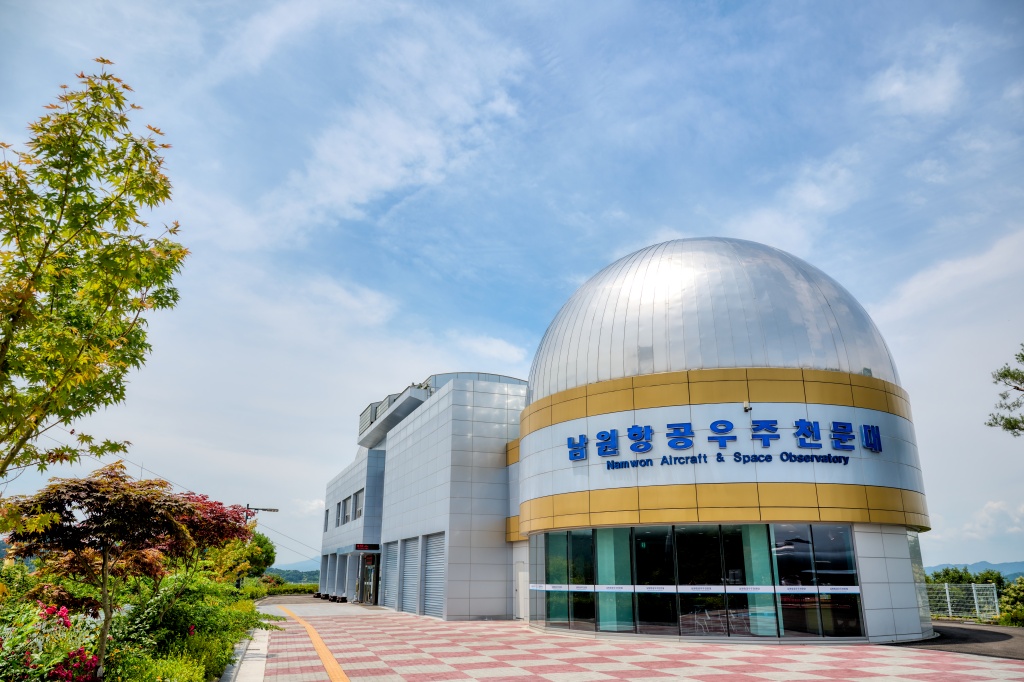
- Namwon Aerospace Observatory
- Namwon Aerospace Observatory with Chunhyang Star and Haze Star Opened on October 9, 2009, Namwon Aerospace Observatory provides children and teenagers in Namwon, the center of tourism culture in the southwest region, and nearby areas with opportunities to experience astronomical space and cutting-edge aeronautical science, and is also a place where families and groups can enjoy together. Experience facilities contribute to creating tourism demand and revitalizing the local economy.
- MORE VIEW
-
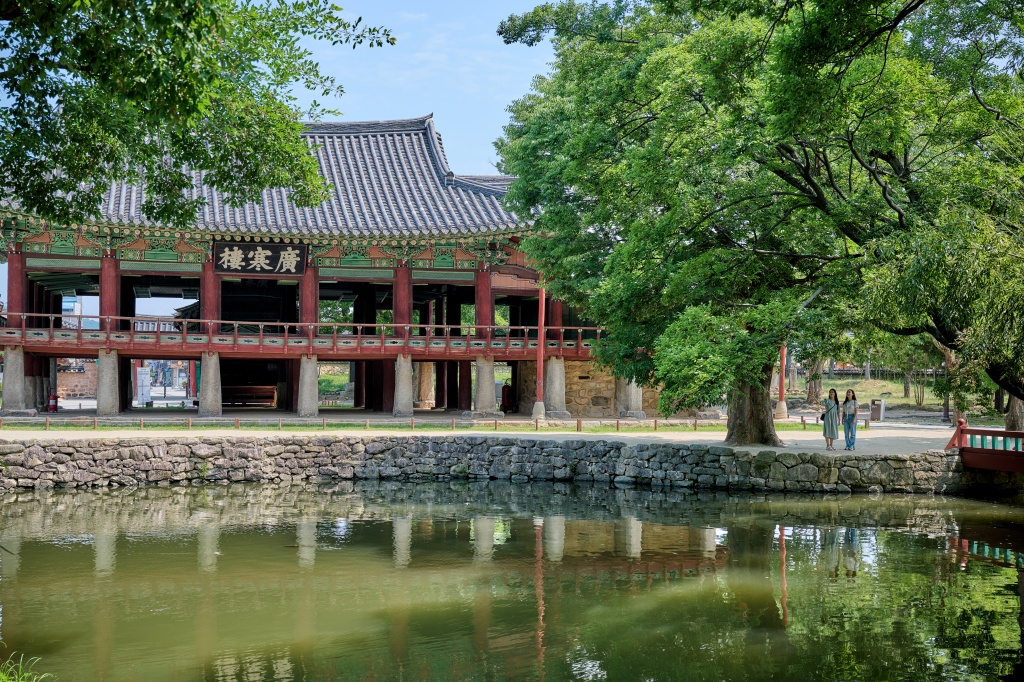
- Gwanghallu Pavilion
- It is a pavilion representing Joseon, which was rebuilt in 1638 (the 16th year of King Injo's reign). It is located in Cheongeo-dong, Namwon-si. Gwanghallu was originally built in the early Joseon Dynasty. In 1419, Hwang Hee, a famous scholar who was exiled to Namwon, raised Gwanghallu Pavilion. The name at the time was Gwangtongru. In 1434, it went through the process of reconstruction, and after Jeong In-ji called it Gwanghan Cheongheobu, it was called Gwanghallu. Gwanghan Cheongheobu refers to the palace where the Jade Emperor of the Moon lives. Along with Yeongnamnu Pavilion in Miryang, Chokseoknu Pavilion in Jinju, and Bubyeoknu Pavilion in Pyongyang, it is excellent enough to be one of the four major pavilions in Korea. Gwanghallu Pavilion is a hipped-and-gabled roof-shaped building with 5 bays in front space and 3 bays in side space and is designated as a treasure. Gwanghalluwon, a garden that combines a pond, Bangjangjeong Pavilion, and Yeongjugak Pavilion, including Gwanghallu Pavilion, has been designated as a scenic spot..
- MORE VIEW
-
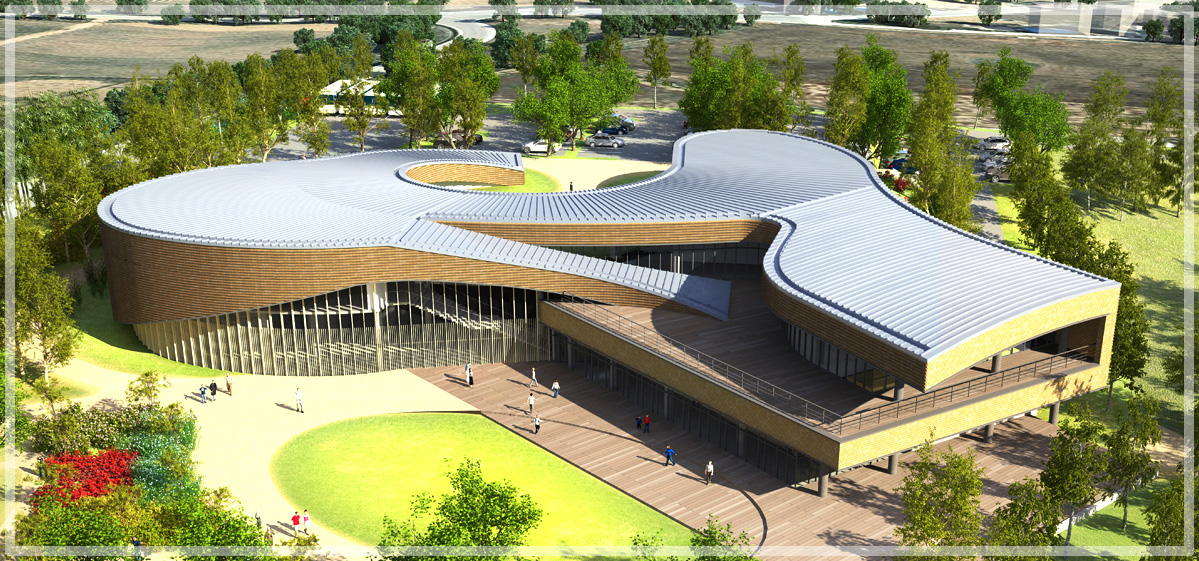
- Baekdudaegan Ecological Education Center Exhibition Hall
- The exhibition hall of Baekdudaegan Ecological Education Center, which is modeled after a map of the Korean Peninsula. Under the beautiful roof given by the curve, there is a space where you can see and experience everything about Baekdudaegan Mountain Range. It provides fun and interest to visitors, including Honam's first 5D Circle Video Hall, an outdoor performance hall, an insect greenhouse, and a tiger rider hall where you can experience running on a tiger through Baekdudaegan Mountain Range. In addition, you can see insects that grow naturally in Baekdudaegan Mountain Range with your own eyes in the insect greenhouse. It operates various experience programs such as making topiary, mother-of-pearl experience, and insect specimens.
- MORE VIEW
-
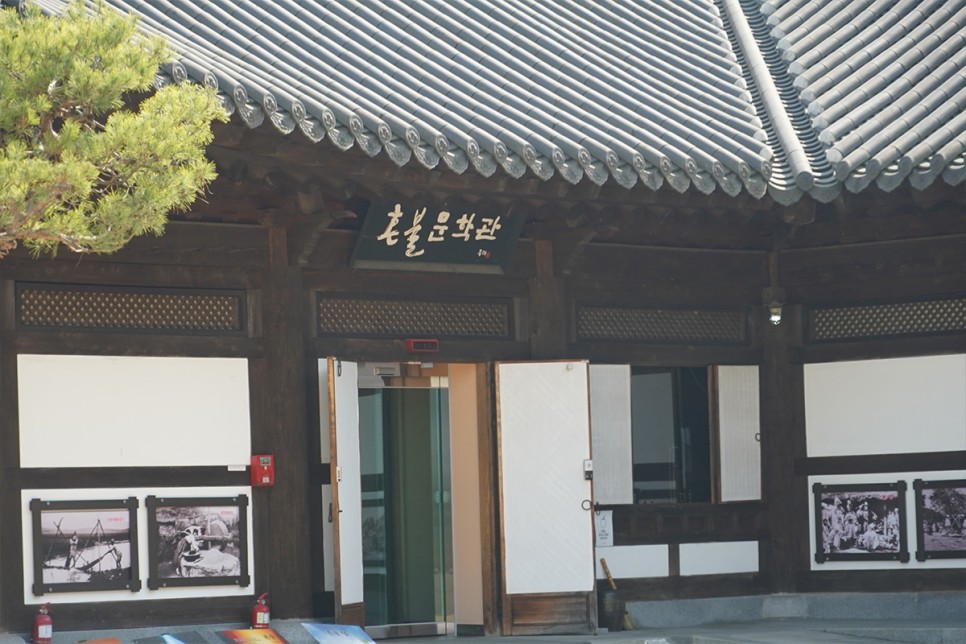
- Honbul Literature Museum
- the setting of the epic novel Honbul It is a literature museum built to commemorate the epic novel Honbul. It is located on Nobongan-gil, Samae-myeon, Namwon-si. "Honbul" is the title of Choi Myung-hee's "Great Story." In Jeolla-do dialect, Honbul is a "ground that forms the soul of a person, or a clear blue light that escapes from the body not long before death." Against the backdrop of Samae-myeon, Namwon-si, Choi Myung-hee unravels the story of the complicated mint chocolate people centered on the three generations of Maean Lee Clan in the 1930s with an accurate style and outstanding sentences. Honbul is considered the greatest achievement of Korean literature in the 1990s. Honbul, however, ends unfinished. This is because Choi Myung-hee died of ovarian cancer, a chronic disease, in 1998. The Honbul Literature Museum consists of an exhibition hall and a flower pavilion. They are all hanoks. In the exhibition hall, there is a manuscript of Choi Myung-hee's handwriting and a diorama depicting the scene of the novel. Kkotsimgwan is a place like a shelter. There is a love room and a numaru.
- MORE VIEW
-
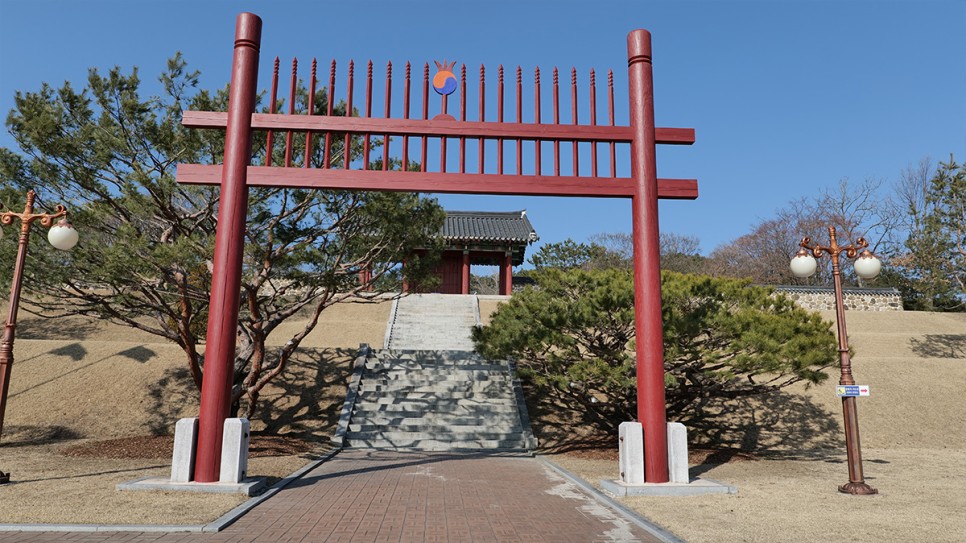
- the gun of the people of Namwon
- Manin's gun is where the spirit of patriotism of more than 10,000 civilian, government, and military doctors who died in the Battle of Namwonseong Fortress during the Japanese Invasion of Korea (1597). During the Japanese Invasion of Korea in 1592, the Japanese army, which judged that it could not invade Honam, invaded Jeonju Castle again in 1597, and the enemy's allies attacked Jeonju Castle and Namwonseong Fortress with 56,000 troops. In order to protect Namwonseong Fortress, the government had more than 1,000 soldiers led by Jeolla soldier Lee Bok-nam and 3,000 soldiers from both houses of the Ming Dynasty's deputy general guard Namwonseong Fortress. However, despite the fierce battle for their lives, more than 10,000 doctors, including 6,000 residents, died heroically after a struggle. After the war, the saints who returned from evacuation built Chungnyeolsa Temple in 1612 (the 4th year of Gwanghae) with their bodies in one tomb. After several relocations, it was purified in 1979 with the support of the government and the sincere dedication of all residents as part of the Hogukseonhyeon site purification project, and a 50-minute memorial tablet is enshrined at Chungnyeolsa Temple. On September 26 every year, the General Assembly of All People holds a memorial service for all doctors, honoring their noble will.
- MORE VIEW
-
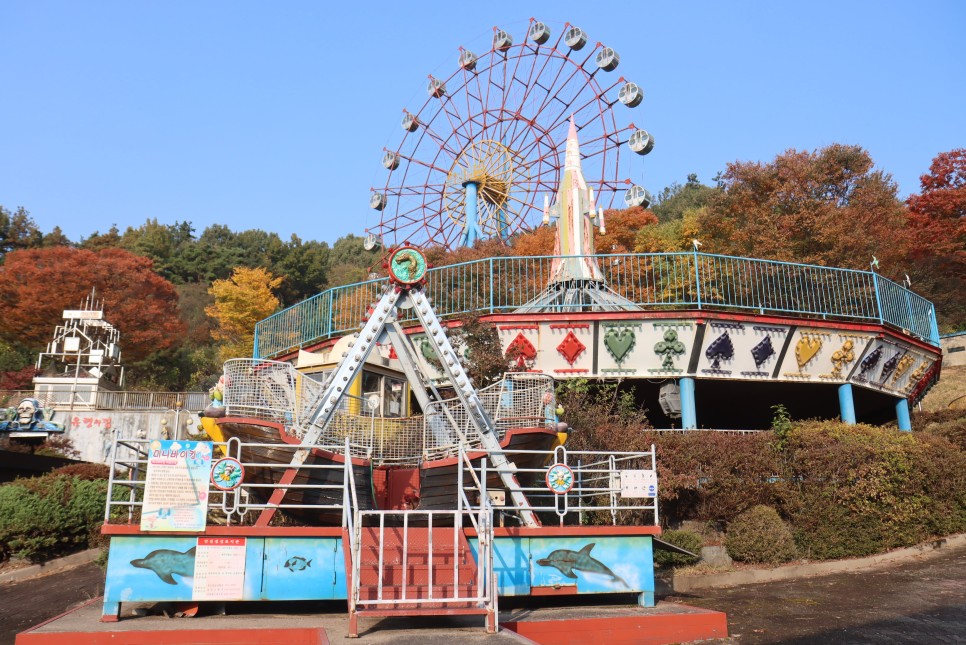
- Namwon Land
- It is located in Chunhyang Theme Park and is one of the famous tourist destinations for filming dramas. There is no separate admission fee, so you can enter for free, so you can come in and walk around freely. (A separate fee is incurred when using the rides.) [Holiday guide] - Closed every Monday-Friday - Saturday to Sunday (weekend) operation
- MORE VIEW
-
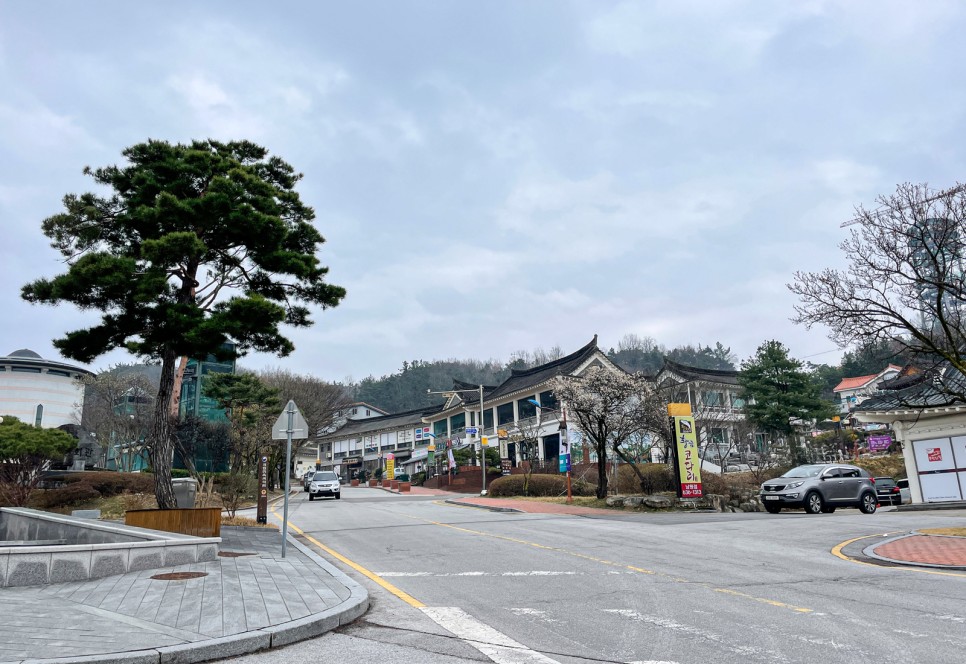
- Namwon Tourist Complex
- Seongri Village, Ayeong-myeon, Namwon-si, is the background of Heungbujeon, one of the five pansori yards. This place was found to be a foot welfare site where Heungbu settled down and became rich based on the folktales and geographical names handed down. Chunbo Seolhwa, a Bokdeokga, has been handed down to this village for a long time. Heungbu and Chunbo Seolhwa are similar in that they are about the life journey of becoming rich after poverty, and the love of Seondeok. In fact, there is a tomb believed to be the tomb of Park Chun-bo in Seongri Village. Every year on the fifteenth of lunar January, the Mangjedan has held a Chunbo Mangje Festival in honor of Heungbu. In Seong-ri, the place names that appear in Heungbujeon remain throughout the village. Geographical names such as Heo Jae-jae, Godunteo, Saegeum Corner, and White Muk Baemi are those that appeared in classics. Heo Jae-gi, where potato farming is now in full swing on both sides of the road, is said to be a pass that the villagers helped Heungbu, who collapsed from hunger. Godunteo is a famous place that a high priest caught for Heungbu, who is suffering from poverty, and Heungbu is the site of a Balbok house that healed swallows here. In fact, the name "Gordun" means that it is the place where houses (warehouses) gather, that is, the place where they become rich. This place is located high on the ridge of Jijijae Pass, which passes to Beonam-myeon, Jangsu-gun, and you can see the foot of the village and the neighboring rice paddies at a glance. The "Sageum Corner" is a place where gold collectors collected gold, and it is presumed that Heungbu picked up gold here and became rich. On the other hand, it is said that the place called "White Porridge Baemi" was given to the benefactors in return after Heungbu became a rich farmer. Heungbu's wife was named "White Porridge" because her neighbors survived from eating white porridge. Nodimakgeori is believed to be a stream where Nolbu crossed the plantation after hearing that Heungbu became rich. It is now covered with concrete, but silver grass is growing thickly by the stream. Walking around here and there, it is worth looking back on the friendship between brothers, wealth and poverty, and the spirit of humility and sharing that did not forget the neighbors who were together in difficult times even after success.
- MORE VIEW





